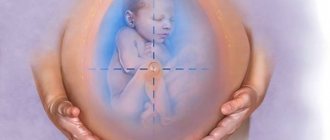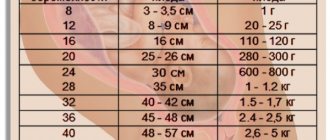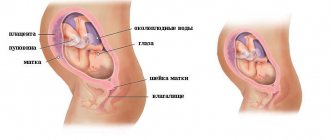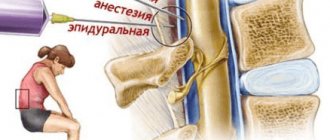General concepts
Determination of daily diuresis is often carried out when diagnosing kidney disease. What is this examination and how is it performed? Everything is quite simple here. The doctor finds out how much urine the body produces per day. As you know, the kidneys help remove fluid. It is this organ that is responsible for the production of urine. If the kidneys are working normally, then up to 75 percent of the fluid is excreted from the body.
Measuring daily diuresis and determining water balance is an important component of diagnosis. In order for the analysis to go as expected, the patient should prepare.
The study is carried out taking into account the following:
- at least three days before the start of determining the norm of daily diuresis, you should stop taking diuretics;
- urine collection begins at six in the morning of one day and lasts until six in the morning of the next day;
- During the entire procedure, the patient must record how much liquid he consumed. In this case, you need to take into account the water you drink, tea, juices and even the soup you eat;
- Urine collection for daily diuresis is carried out in a separate container. In this case, the volume estimate will be more accurate. How to collect is a personal matter for everyone. As a rule, such an analysis is carried out in a hospital, where it is easier to calculate both the amount of fluid drunk and the volume of urine excreted. But you can collect all the data at home.
Only by fulfilling all these conditions can you find out whether diuresis is normal or if there are deviations. And from here you can get information about kidney function.
As a rule, the concept of daily diuresis is used for diagnosis. But others are also used for various studies. For example, when studying renal function using the clearance method, minute diuresis is used.
If the patient is in serious condition and is receiving a blood infusion, then one of the procedures performed simultaneously is bladder catheterization. In this case, hourly urine output is measured. If this indicator is below 20 ml, then the rate of infusion should be increased. As you can see, the value of hourly diuresis is very important during resuscitation measures.
Measuring daily urine output and determining water balance
Diuresis
- This is the release of urine over a known period of time.
Daily diuresis
- the total amount of urine excreted by the patient during the day. Daily diuresis in adults is 800 - 2000 ml and depends on age, temperature and humidity of the environment, nutritional conditions, physical activity and other factors and should be 75-80% of the amount of fluid drunk; 20-25% of the fluid is excreted through sweat, breathing and stool.
Daily water balance
- this is the ratio between the amount of fluid introduced into the body and the amount of fluid excreted from the body during the day. The liquid contained in fruits, soups, vegetables, etc., as well as the volume of parenterally administered solutions are taken into account.
Accounting and determination of water balance
Target:
- diagnosis of hidden edema,
- monitoring the effectiveness of diuretics.
Equipment:
- medical scales
- measuring glass graduated container for collecting urine
- water balance sheet
Preparation for the procedure:
- Ensure that the patient can perform a fluid count independently.
- Explain to the patient the need to adhere to the usual water, food and physical regime.
- Give detailed information about the order of entries in the water balance sheet. Make sure you know how to fill out the sheet.
- Explain the approximate percentage of water in food to facilitate accounting for the fluid administered (not only the water content in the food is taken into account, but also parenteral solutions administered).
Performing the procedure:
- Explain that at 6:00 o’clock you need to urinate in the toilet.
- Collect urine after each urination into a graduated container and measure urine output.
- Record the amount of liquid released on the accounting sheet.
- Record the amount of fluid entering the body on a record sheet.
For example:
| Injected fluid | Removed liquid |
| 00ml | 100ml |
| 150ml | 500ml |
| 250ml | 150ml |
| 50ml | 100ml |
| 300ml | – |
| 150ml | 300ml |
| 250ml | 100ml |
| Total: 1350ml | 1250ml |
- At 6.00 the next day, hand in the record sheet to the nurse.
End of the procedure:
- The nurse should determine how much fluid should be excreted in the urine (normal).
- Compare the amount of fluid excreted with the amount of calculated fluid (80% is the normal amount of fluid excreted).
- Water balance negative
, if less fluid is released than normally calculated.
- Water balance positive
, if more fluid is released than normal.
- Make entries on the temperature water balance sheet.
Note:
- Determination of daily diuresis can be done from 8 a.m. to 8 a.m. the next day.
Adjacent files in item [UNSORT]
Source: https://StudFiles.net/preview/3828153/page:3/
What types are there
Almost every medical concept and indicator has variations. The same applies to the topic at hand. First of all, a distinction is made between daytime and nighttime diuresis. The first, as a rule, makes up two thirds of the total daily volume. After 8 hours of the night, urination is significantly reduced. If the ratio is violated, then this condition is called nocturia. It can be caused by various diseases.
In addition, the following types of diuresis are distinguished depending on the content of released osmotic active substances and urine volume:
- Water. In this case, the urine contains a small amount of active substances. This manifestation can serve as a sign of diabetes insipidus, tick-borne encephalitis and some renal pathologies. But quite often water diuresis is caused when the water balance is disturbed. The patient may be drinking a lot of fluids, especially in hot weather.
- Diuresis is osmotic. There is a large amount of urine with a high content of various active substances.
- Antidiuresis. This type is characterized by a small amount of urine, which is excessively saturated with various substances.
The last two types of diuresis in adults and children indicate the presence of pathologies in the functioning of the kidneys. Monitoring of such patients should be increased. Plus, it is necessary to conduct a more thorough examination to identify the factors that led to the imbalance of water balance.
Bladder during pregnancy
Urinary incontinence or swelling are quite common during pregnancy. Why is this happening?
During pregnancy, the volume of urine output increases. The growing uterus gradually encircles the bladder and its volume decreases. During pregnancy, the uterus moves the internal organs and they have to crowd and adapt to new positions. Due to the decrease in bladder volume, some urine remains in the ureters.
During pregnancy, urine can be released spontaneously - during physical exertion, or if the baby accidentally touches the mother's bladder.
What is considered normal
How is it determined that daily diuresis is normal? What methods are there? When calculating, it is not a clear norm that is determined, but the ratio of the liquid drunk and the volume of urine excreted. This is exactly what is most important.
In a normal healthy person, approximately 75 percent of the “intake” fluid should “come out.” That is why, for an accurate calculation, it is necessary to determine not only the volume of urine collected, but also how much water was drunk.
According to existing standards, the amount of water drunk should be about two liters per day.
Based on this, normal diuresis for the same period will be:
- for adult men from one to two liters;
- for women this parameter ranges from 1 to 1.6 liters;
- if we are talking about a child, then the following formula applies: 600+100(x-1) milliliters per day. Here, instead of the “X” value, you should insert the baby’s age. For example, for a ten-year-old child, positive daily diuresis will be 1.5 liters.
A study by scientists showed that the normal minimum diuresis is 500 ml. It is this amount of excreted urine that is enough for a person’s kidneys to remove all accumulated “unnecessary” substances from the body. If everything is calculated correctly and half a liter will be exactly 75 percent of the liquid drunk per day, then the water balance is not disturbed and regulation of urination is not required.
It is worth noting that such norms are not entirely suitable for women who are carrying a child. In this situation, the hormone significantly affects the state of the body. In some cases, diuresis increases to 80 percent of the fluid drunk; in other pregnant women, it can drop to 60 percent. In both situations, such an indicator can be considered the norm, which means that regulation is not required.
In any case, pregnant women need to record how much liquid they drank and how much it came out. This needs to be done periodically. If the water balance is disturbed, this can have a detrimental effect on both the condition of the expectant mother herself and the development of the fetus.
Daily urine protein content
- How to collect a daily urine test during pregnancy
- Urine rate per day for pregnant women in liters
- Why collect all the portions per day?
- Preparing for analysis
- Zimnitsky test
- Glucosuric profile
- Daily urine test for protein during pregnancy
Often, closer to the end of pregnancy, a woman begins to show signs of gestosis - late toxicosis, especially if she was previously diagnosed with various chronic diseases.
In such cases, doctors immediately check the daily protein in the urine. Visually, you can notice a change in color and transparency: the urine in the jar is cloudy and there is sediment. The protein norm is up to 0.03 g/l. What does increased daily protein indicate? First of all, doctors suspect that the kidneys are not doing their job. The reason for this may be a heavy load during pregnancy, especially if the woman has previously suffered from chronic pyelonephritis. The dose of protein increases with inflammation of the urinary tract, but this phenomenon is temporary.
How much urine do you need to take a protein test? Usually they use a sample from daily urine, less often - all urine if they do a Zimnitsky test.
In addition to protein and sugar content, doctors are interested in indicators such as:
- color;
- transparency;
- density.
Each of them has a lot to say to an experienced specialist. The woman’s task is not to panic, even if abnormalities are detected, but to calm down and trust her doctor. He will make a decision, prescribe a suitable diet and prescribe medications if necessary. Today you can successfully bring your pregnancy to a successful conclusion even in the presence of serious pathologies, so you should expect the best and follow all the doctor’s instructions.
Reasons for rejection
What could an increase or decrease in daily diuresis mean? What scientists know the factors that influence the amount of urine excreted from the body?
Doctors distinguish the following deviations from the norm:
- Oliguria is a decrease in diuresis when the level of urine excreted decreases to half a liter per day. In some cases, this situation may not be a concern. For example, if the weather is hot, most of the fluid is released through sweat. But there are also some pathologies that lead to a decrease in daily diuresis. Doctors include nephritis, acute massive hemolysis, damage to the renal parenchyma and infectious inflammation of the kidneys to such ailments. Low blood pressure also leads to a decrease in urine output;
- polyuria - what is this condition? By this definition, doctors understand diuresis, in which the amount of urine excreted exceeds three liters. This condition occurs with kidney diseases such as pyelonephritis, wrinkled kidney, and renal failure. In addition, there are ailments that are not associated with this organ. For example, diabetes can also cause increased urine output. This condition is also observed if diuretic tablets or injections are taken. Their action ensures the removal of edema, removing excess fluid from the body;
- Anuria is a condition when the amount of urine excreted per day is less than 50 ml. The algorithm for this manifestation may be different, but the main problem is that the fluid does not enter the urinary canal. The main cause of anuria is chronic kidney disease, including the presence of stones in this organ. In addition, such a manifestation can occur due to benign or malignant neoplasms, cardiovascular failure, or as a result of severe poisoning with alcohol or heavy metals.
Increased or decreased daily diuresis and imbalance between daytime and nighttime urine output can also be influenced by hormones. This substance controls most processes in the body. At the same time, the level of diuresis is affected not by one hormone, but by several at once.
Polyuria may result from a malfunction of the pituitary gland. This organ produces antidiuretic hormone, which regulates urinary processes. Therefore, if the pituitary gland is disrupted, diuresis may increase. Thyroid and adrenal hormones can also lead to this phenomenon.
Why should you pay attention to your morning urine?
A doctor-prescribed general urine test requires a morning portion. This is due to the fact that at night a healthy person has no obvious urge to urinate. The presence of the latter at night indicates the existence of a hidden disease. The total amount of morning urine does not differ much from the usual portion, since it is at night that the ability of the kidneys to concentrate urine is manifested. Normally, this should be 200-300 ml. The color may be more saturated, since the concentration of salts is highest in morning urine.
By assessing the daily volume of urine, the patient has the opportunity to independently identify the presence of a hidden disease, which will allow the doctor to identify the disease in the early stages and prescribe treatment.










